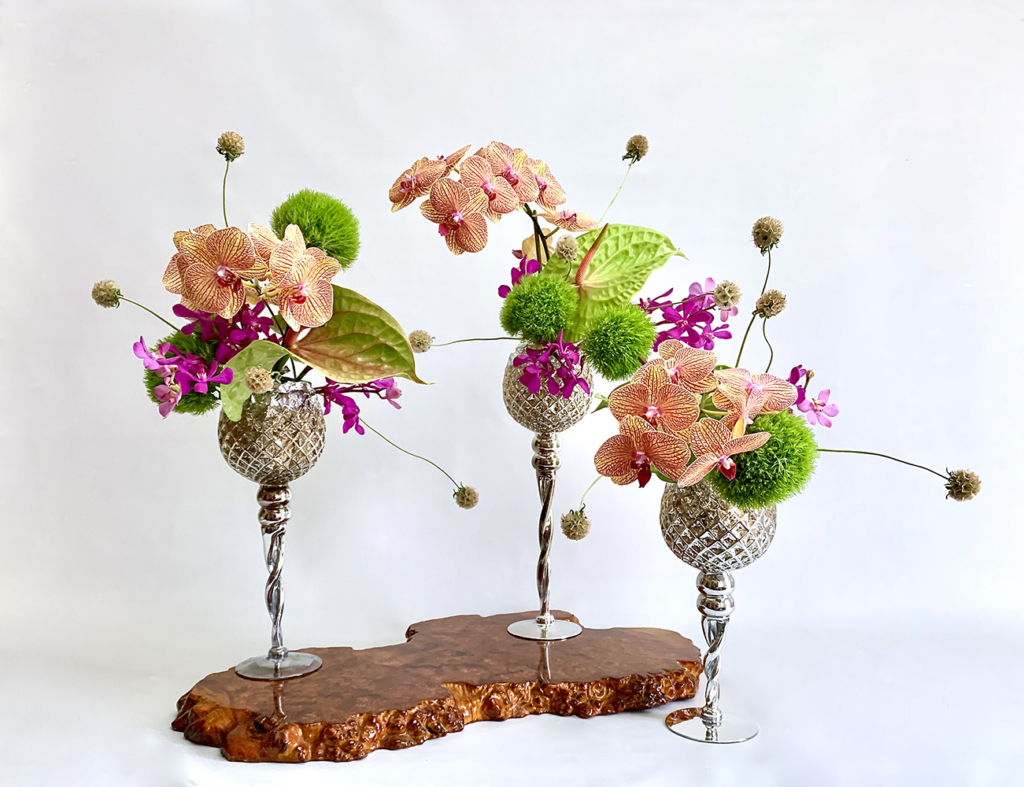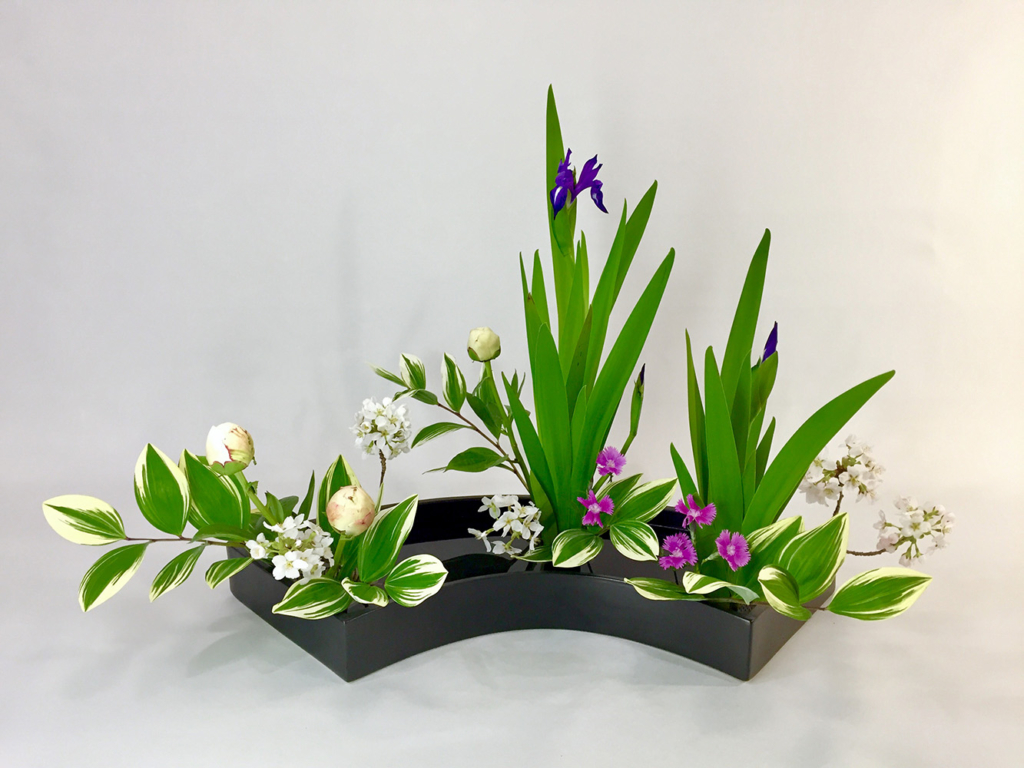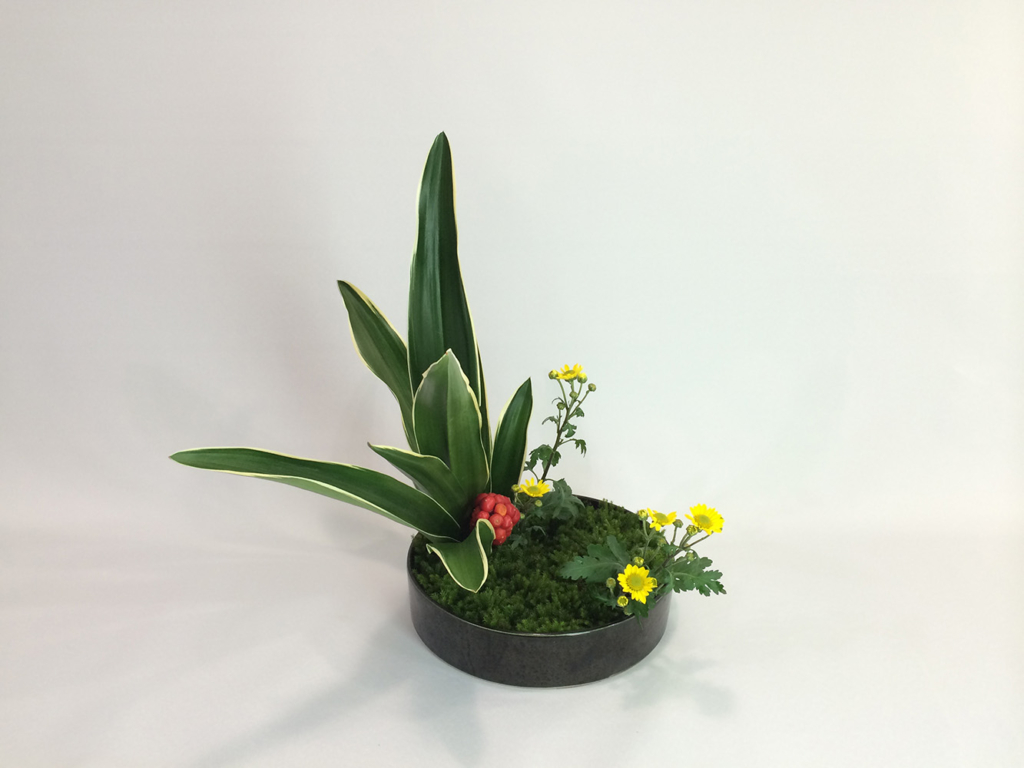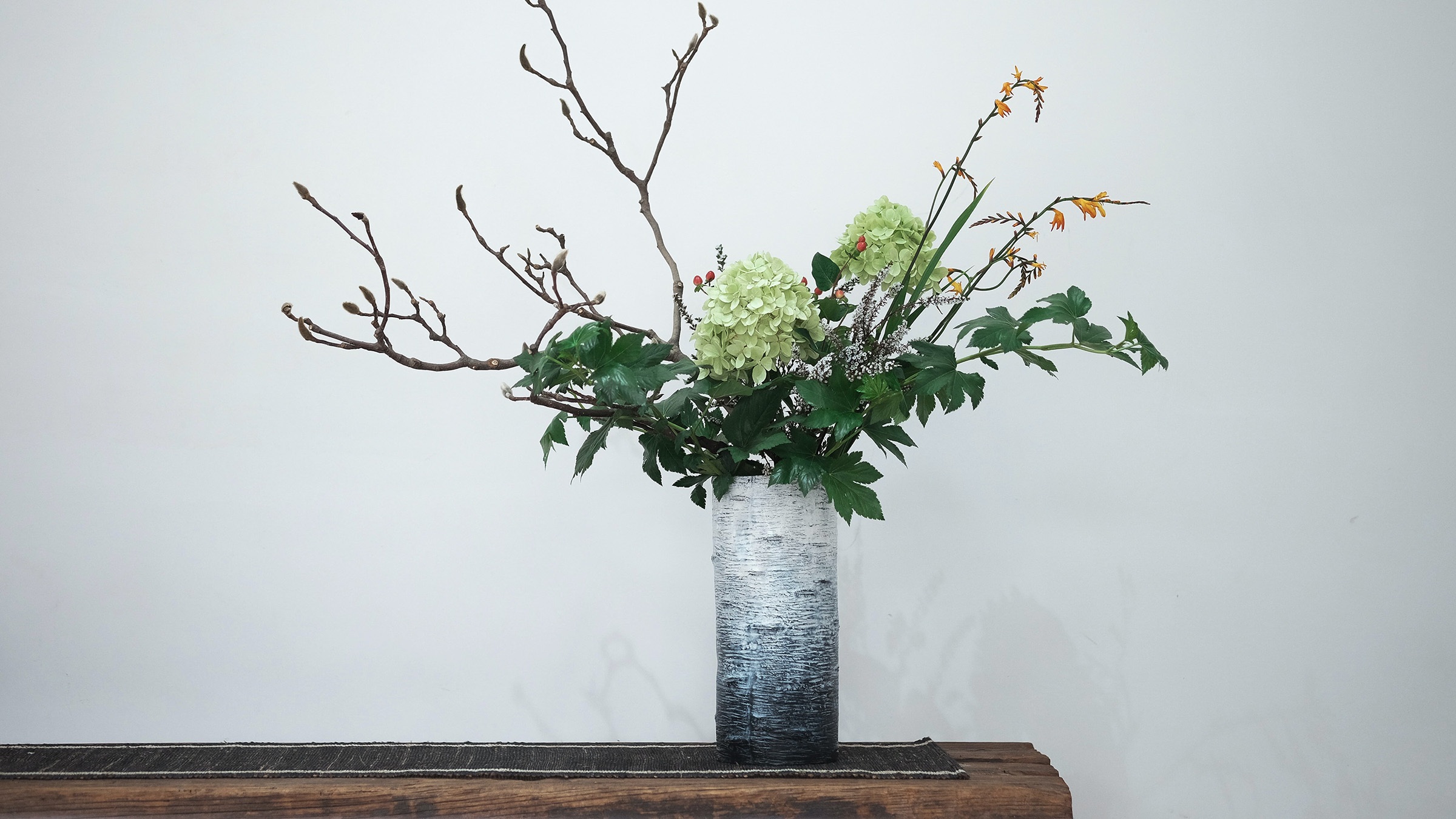If you always dreamt of being a samurai, consider learning ikebana. No, seriously.
The ancient Japanese art of flower arrangement was one of several disciplines, such as tea ceremony and calligraphy, that samurai learnt as part of their official training. Part exercise in concentration, part contemplation of life, ikebana aims at “creating designs that will make plants even more beautiful than in their natural form. This ephemeral beauty, which is the fundamental aspect of ikebana, touches the viewer’s heart,” writes Prof. Shōzō Satō in his 1968 classic Ikebana: The Art of Arranging Flowers.
Dating back to the 6th century, when it was used to festoon Buddhist temples, the art is deeply rooted in Buddhism as a way of contemplating the impermanence of life, a concept which became ingrained in Japanese culture, now known under the name of mono no aware. Later, ikebana evolved into a way to decorate a specific section of Japanese houses, an alcove called tokonoma, a key place for displaying art.
Today, ikebana is the perfect hobby for plant enthusiasts and lovers of beauty. Even more than that, though, it is an art whose meditative, contemplative practice almost outweighs its decorative aspects. Also called kadō, ‘the way of flowers’, it considers the natural features (and symbolism) of plants and flowers with the aim of recreating cohesive, balanced compositions. Not an easy feat by any means, but one that brings joy and peace, and helps develop artistic sensitivity.

[Photo: Stephen Coler]
Where To Start?
First things first: you’ll need a kenzan (flower frog). This is a weighted support with pins to hold flowers and branches in place. While some ikebana schools don’t use a kenzan, working with one allows you to precisely regulate the angle of the different elements – a very important aspect of these arrangements – in ways that other supports (such as foam) just can’t match. You can easily buy a kenzan at a flower shop or even online.
To beginners, learning ikebana can feel overwhelming. There are many different schools in Japan, each proposing many types of compositions; choosing can be difficult. While it would seem logical to start by studying them, I personally found that the best way to approach ikebana is to learn by doing. This will allow you to immediately put its rules into practice, which will help you understand their rationale while memorising them at the same time.
Due to the complexity of the topic, I recommend learning under the guidance of an experienced teacher. For this article, I took an online class by Stephen Coler, 1st Degree Master and Certified Teacher of the Ohara School of Ikebana. I chose the Ohara school for its modern approach to ikebana, its focus on moribana arrangements (tridimensional arrangements in shallow containers) and its attention to seasonality.

[Photo: Stephen Coler]
A short note on seasons: Japanese culture puts a special emphasis on their role in decorations, much more than we usually do in the West. Apartments and houses are decorated with seasonal motifs, as are shops, retail packaging, etc. In fact, travelling to Japan in different seasons can lead to significantly different visual experiences. To respect this cultural aspect, I recommend choosing a composition that can be realised with seasonal flowers.
Recreating Nature’s Harmony
Once you’ve picked the composition and gathered the different materials, it’s time to get started. Contrary to typical Western flower arrangements, ikebana compositions are minimalistic: they use very few materials, often only two or three, arranged almost mathematically to harmonise with each other and the container they are in, as well as to create depth and width. This means that we need to consider their length, orientation, position on the support and relationship with the viewer.
One important principle to keep in mind is that symmetry is not the goal. “In Western-style flower arrangements, it is important to show the beauty of the flowers in full bloom; there is also a sense of symmetry. But in ikebana, asymmetry is important, as it helps to show off the beauty of the individual stems. Therefore, each stem should be looked at carefully, and then placed in the arrangement to show its beauty off,” says Coler.

[Photo: Stephen Coler]
It might also help to know that ikebana’s underlying philosophy aims at recreating harmony between the sky (shin), man (soe) and earth (tai), each symbolised by different types of plants and flowers. “Think about the total balance of your composition,” says Coler. As you introduce new material into the composition, it is only natural to re-adjust elements on the kenzan until they feel in harmony with each other.
Developing A Sense Of Balance
Many factors affect the end result, and keeping track of everything can feel tricky at first. Yet, when practicing, it becomes clear which kind of questions need to be asked, and how we can solve the different challenges of creating a balanced ensemble. It is mainly through the deep observation of the materials, their shapes, colour, inclination, curves and the relationship between their positions in respect to each other and the viewer that we can make the right choices.
Several other considerations also come into play, for example plants growing in completely different habitats should not be mixed, flowers and branches should generally be looking up, and strong colours will need to be balanced, but they always make sense if we adopt a naturalistic, minimalistic approach to flower arrangements.
In fact, as I went on creating my composition, I started to develop a feeling for how to position flowers and branches. Of course, I made mistakes, but I felt that the proportions used in ikebana, often a 1:3 or a 1:2 ratio, resonated with me – it just felt right to place the elements in a certain way. Contrary to other artistic practices I tried, it was surprisingly easy to shift into a meditative state which absorbed me completely. As a result, once I felt that my first composition was ready, I felt like creating a second one. Ikebana can be that addictive.
Even more astonishing, the resulting flower arrangement somehow became a by-product of my contemplative state. The accomplishment I felt in recreating a natural, yet artistic harmony of flowers was much more satisfying than owning or using the composition. By practicing it, it became clear to me that ikebana helps those who practice it develop a refined sense of balance and an artistic sensitivity that are harder to gain from other practices. For this reason, and for the beauty and peace it brings to both makers and viewers, I absolutely recommend trying ikebana.














Sorry, the comment form is closed at this time.